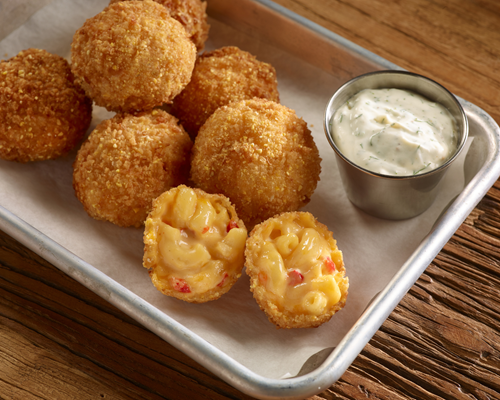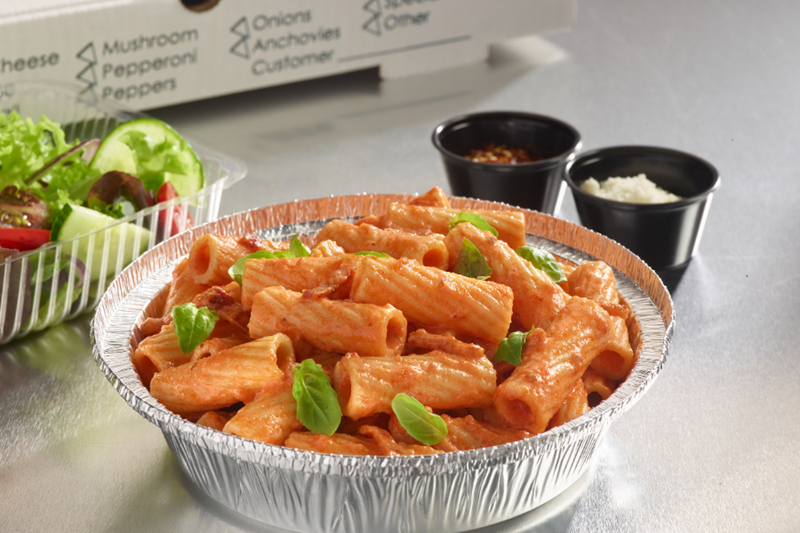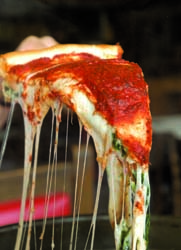Why is oil or shortening used in pizza crust production?
Oil or shortening, in general, seem to be those ingredients used in pizza crust production that many know little (if anything) about — except that they are an integral ingredient. What oil actually does, to most people, is somewhat of a mystery. Lets see if we can uncloak that mystery and unveil the reasons why oil or shortening is used in pizza crust production.
For this article, I will define oil as a liquid form of fat and shortening as any other form of fat. Oils can come from any of a number of sources, but it will always be in a liquid form and contain 100 percent fat. As a liquid it will be in a pourable form. Shortening can also be made from any number of plant or animal sources, but it will always be in a semi-solid, or plastic, state. Unlike oil, it may contain some water, as is the case with margarines and butter, which are roughly 20 percent water by weight. So, when replacing oil with shortening, one would use an equal amount of shortening as oil, but if replacing oil with butter or margarine, one would need to use 20 percent (1/5) more butter/margarine than oil to retain the same overall fat content.
There are some types of shortening and margarine (and yes, even butter) that are specially treated (hydrogenated) to give it a very solid characteristic. These are known as “fat flakes”. Fat flakes are designed to retain their integrity (size/shape) when mixed into a dough so when the dough is heated during the baking process the fat flakes melt and the fat is absorbed into the surrounding dough. This helps to create a more open, porous internal cell structure desirable in some instances, such as when dough is processed using high-speed automated equipment in a wholesale or commissary environment.
Benefits of incorporating fats in pizza dough
Fat can contribute flavor to the finished crust in either of two ways. It can provide a unique flavor based upon its source, such as olive oil, sesame oil, butter or lard. It can also act to entrap or hold flavors, too. In this case, the fat will take on the flavors released during the baking of the pizza, giving the finished pizza a more balanced flavor profile. All types of fat exhibit this unique characteristic.
Fats also improve or enhance the perceived richness of the finished crust. As a general rule, things just taste better when they are made with some form of fat at an appropriate level. They also serve to lubricate the dough structure and seal the cell walls within the dough so they are better able to retain the leavening gas and water vapor during the baking process, resulting in better baked height (oven spring). In crusts that are formed by one of the pressing methods, oil at levels of 3 percent of the flour weight and higher is needed to provide lubrication to the dough. This allows it to be pressed out from a round or squat shaped dough piece to a flat circular shape in just a fraction of a second.
All types of fats are known as “tenderizers,” as they provide a more tender eating characteristic to the finished crust. This can be important if you are a carryout or delivery business. We all know that pizza crusts lose their desirable crispy characteristic and take on a more tough and chewy characteristic during the delivery or take home time. The use of fat at levels of 5 percent of the flour weight and higher will help to reduce some of this toughness and give the crust a more tender eating characteristic. Yes, it will also give a softer crust characteristic at the same time, but who said that a delivered pizza had anything but a soft crust characteristic? Would you rather have a delivered pizza with a soft crust or a tough, chewy crust?
Fat flakes are interesting with a multi functional purpose. They are designed to retain their integrity within the dough and melt during baking as means of creating holes and voids in the baked crust. Some of the new generation of fat flakes are referred to as hydrated fat flakes because they will contain 12 to 15 percent water. This water content is important to the functionality of the flakes. As the fat melts and is absorbed into the surrounding dough, the water is vaporized and creates a much more pronounced and desirable void in the still forming dough structure. To achieve these characteristics fat flakes are used at levels of 10 to 15% of the total dough weight. If you have ever seen a microwave-able pizza or calzone and noticed the open, porous structure of the crust, it is a good bet that fat flakes played an integral role in achieving that structure.
In our industry, we typically use olive oil in our pizzas — but at a significant cost. If you want to reduce the cost of the olive oil, yet still retain the flavor characteristics, you can blend olive oil with salad oil at the rate of 1-part olive oil to 4-parts vegetable oil (my personal preference is to use canola oil due to its universally bland flavor). You can buy readymade blends. If the flavor aspect of the oil isn’t of great importance you can take your pick from many of the different salad/vegetable oils available, as they will all perform in a similar manner.
You can select the type of fat used in the dough formulation to compliment the type of pizza that you are making, too. For example, if you are making an Asian-style pizza, the use of sesame oil might provide the crust with just the right flavor profile or, if you are making a pizza with a Latin American flair, you might consider using lard as the source of fat in your crust for the unique flavor that it imparts to the finished crust. Since lard is a widely used fat type in much of Latin America, its flavor would be readily recognized and right at home in this specific application.
While many of us would like to reduce the amount of fat in our diet, the fact still remains that fat is both functional and good tasting in pizza crusts. So, we should take great care so as not to reduce the amount of fat added to our dough formulas to the point where it will adversely affect finished quality. Remember, even at levels of 3 to 5 percent of the flour weight the amount of fat in a pizza crust isn’t considered excessive when you look at the amount of fat contributed by the meat and cheese toppings. So if you are trying to control the amount of fat in your pizzas it might be better to look at the cheese and meat toppings rather than your crust for fat reduction avenues.




